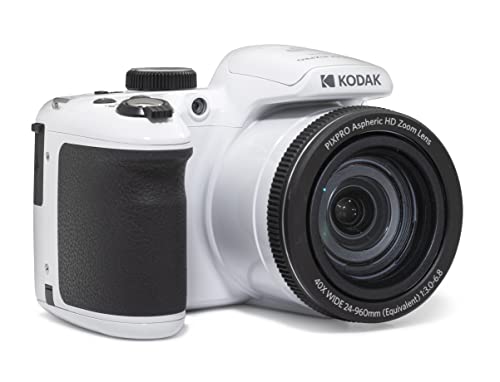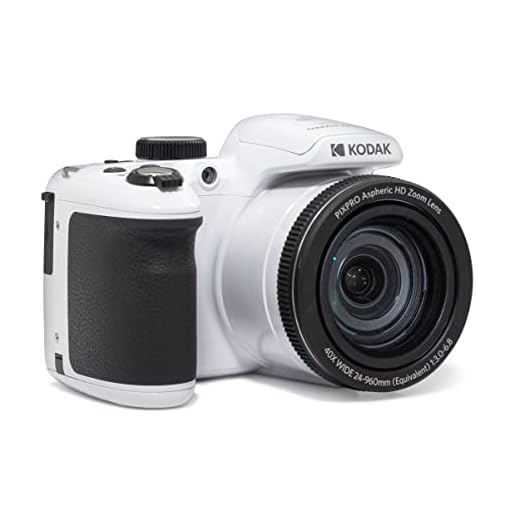




Image stabilisation is a crucial feature in modern digital cameras that helps photographers capture sharp and clear images even in challenging shooting conditions. It is a technology designed to reduce the blurring caused by camera shake, ensuring that your photos are crisp and detailed.
There are two main types of image stabilisation found in digital cameras: optical image stabilisation (OIS) and in-body image stabilisation (IBIS). OIS works by physically moving lens elements to compensate for camera movement, while IBIS adjusts the camera’s sensor to counteract shake.
Whether you’re shooting in low light, using a telephoto lens, or capturing fast-moving subjects, image stabilisation can make a significant difference in the quality of your photos. Understanding how this technology works can help you take your photography to the next level.
Understanding Image Stabilisation in Digital Cameras
Image stabilisation in digital cameras is a technology that helps reduce the effects of camera shake when taking photos. Camera shake can occur when the camera is handheld and the photographer’s hands are not completely steady, resulting in blurry images. Image stabilisation helps counteract this by compensating for small movements and vibrations, allowing for sharper images.
There are two main types of image stabilisation in digital cameras: optical image stabilisation (OIS) and electronic image stabilisation (EIS). OIS works by physically adjusting the camera lens or sensor to counteract movement, while EIS uses software algorithms to digitally stabilise the image.
Benefits of Image Stabilisation:
1. Sharp Images: Image stabilisation helps capture sharper images by reducing the impact of camera shake.
2. Low-Light Performance: With stabilisation, photographers can take clear photos in low-light conditions without the need for a tripod.
Understanding image stabilisation in digital cameras can help photographers improve the quality of their images and expand their creative possibilities.
Types of Image Stabilisation
There are several types of image stabilisation techniques used in digital cameras to reduce blur and improve image quality:
1. Optical Image Stabilisation (OIS): OIS uses lens elements or a floating lens to compensate for camera shake and movement. This technology is effective in reducing blur caused by hand movements.
2. Sensor-shift Image Stabilisation: In this technique, the camera’s image sensor moves to counteract any motion detected. This type of stabilisation is often found in mirrorless and DSLR cameras.
3. Electronic Image Stabilisation (EIS): EIS uses software algorithms to reduce blur in images by digitally compensating for camera shake. While not as effective as OIS, EIS is commonly found in smartphones and compact cameras.
4. Dual Image Stabilisation: Some cameras combine OIS and EIS to provide a more comprehensive stabilisation solution, offering the benefits of both optical and digital stabilisation methods.
Benefits of Image Stabilisation
Image stabilisation in digital cameras offers several key benefits to photographers, helping them capture sharper images and smoother videos. Here are some of the advantages of image stabilisation:
- Reduced Blur: Image stabilisation helps reduce camera shake, resulting in sharper images, especially in low light conditions or when using longer focal lengths.
- Improved Low-Light Performance: With image stabilisation, photographers can achieve better results in low-light situations without the need for a tripod, allowing for more flexibility in shooting conditions.
- Enhanced Video Quality: Image stabilisation minimises shaky footage when recording videos, producing smoother and more professional-looking clips.
How Image Stabilisation Works
Image stabilisation in digital cameras works by reducing the effects of camera shake, resulting in sharper images. There are two main types of image stabilisation: optical and digital.
Optical image stabilisation (OIS) uses physical mechanisms within the camera lens to compensate for movement. This can involve moving lens elements or shifting the sensor to counteract shake. OIS is particularly effective for reducing blur in low-light conditions or when using telephoto lenses.
Digital image stabilisation (DIS) relies on software algorithms to process the image data and reduce the appearance of shake. While not as effective as OIS, DIS is a useful feature in many compact cameras and smartphones. It works by cropping the image slightly and aligning it with the desired frame to minimise the effects of movement.
Both types of image stabilisation work together or independently to help photographers capture clearer and more stable images, especially in challenging shooting conditions.
Importance of Image Stabilisation
Image stabilisation is a crucial feature in digital cameras as it helps reduce the effects of camera shake, resulting in sharper images. Camera shake can occur when shooting handheld or in low light conditions, leading to blurry photos. Image stabilisation technology compensates for this movement, allowing you to capture clear and crisp images even in challenging shooting situations.
Factors to Consider for Image Stabilisation
When choosing a digital camera with image stabilisation, there are several factors to consider to ensure optimal performance:
1. Type of Image Stabilisation
There are different types of image stabilisation technologies, such as optical image stabilisation (OIS), electronic image stabilisation (EIS), and sensor-shift image stabilisation. Each type has its pros and cons, so it’s essential to understand the differences and choose the one that best suits your needs.
2. Effectiveness of the Stabilisation System
Consider the effectiveness of the image stabilisation system in reducing camera shake and producing sharp images. Look for cameras with advanced stabilisation features that can compensate for different types of movement, including hand tremors and vibrations.
Additionally, check reviews and user feedback to gauge the real-world performance of the image stabilisation system in various shooting conditions.
Image Stabilisation in Different Camera Brands
Image stabilisation is a crucial feature in digital cameras that helps reduce blurriness caused by shaky hands or movement during photography. Different camera brands implement image stabilisation technology in various ways to enhance the quality of images and videos captured by their devices.
Sony
Sony cameras often feature Optical SteadyShot image stabilisation technology, which helps in capturing sharp and clear images even in low-light conditions or while shooting handheld. This technology allows users to take steady shots without the need for a tripod, resulting in better image quality.
Canon
Canon cameras come equipped with Optical Image Stabilization (OIS) technology that helps reduce camera shake and blur in photos and videos. Canon’s OIS system is designed to detect and correct unwanted movements, ensuring sharp and stable images even in challenging shooting conditions.
| Camera Brand | Image Stabilisation Technology |
|---|---|
| Sony | Optical SteadyShot |
| Canon | Optical Image Stabilization (OIS) |
Future of Image Stabilisation Technology
As technology continues to advance, the future of image stabilisation looks promising. Manufacturers are constantly working on improving existing stabilisation systems and developing new innovative solutions to provide users with even better image quality.
One exciting development is the integration of artificial intelligence (AI) into image stabilisation technology. AI algorithms can analyze motion patterns and predict camera shake to adjust the stabilisation in real time, resulting in sharper images even in challenging conditions.
Another trend is the use of sensor-shift image stabilisation in combination with optical stabilisation. This dual stabilisation system can compensate for a wider range of motion and provide even more effective stabilisation, especially in situations where camera shake is more pronounced.
Furthermore, the miniaturization of stabilisation components allows for smaller and lighter cameras with powerful stabilisation capabilities. This makes it easier for photographers and videographers to capture steady shots without the need for bulky equipment.
Overall, the future of image stabilisation technology is bright, with advancements in AI, dual stabilisation systems, and miniaturization paving the way for even better image quality and user experience.
FAQ
What is image stabilisation in a digital camera?
Image stabilisation in a digital camera is a technology that helps reduce the blurriness in photos caused by shaky hands or movements during capturing images. It works by compensating for the motion of the camera, allowing you to take clearer and sharper photos even in low light conditions or when using a telephoto lens.
How does image stabilisation work in digital cameras?
Image stabilisation in digital cameras can be achieved through optical stabilisation, where the lens elements physically move to counteract the motion of the camera, or sensor-shift stabilisation, where the camera’s sensor moves to compensate for the shake. Both methods help in reducing blur and improving image sharpness.








